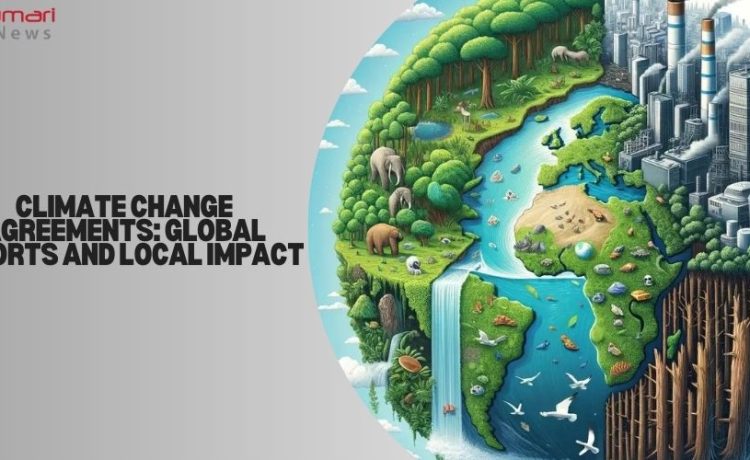Climate change is one of the most pressing challenges facing humanity today, prompting a series of global efforts aimed at mitigating its effects and adapting to its inevitable consequences.
Over the past few decades, various international agreements have been established to address climate change, leading to significant commitments from nations around the world. However, the true measure of these agreements lies not only in their global implications but also in their local impacts.
This article explores the landscape of climate change agreements, their objectives, and how they affect communities on the ground.
The Framework of Global Agreements

- The United Nations Framework Convention on Climate Change (UNFCCC): Established in 1992, the UNFCCC laid the groundwork for international climate negotiations. It aimed to stabilize greenhouse gas concentrations to prevent dangerous anthropogenic interference with the climate system. The annual Conference of the Parties (COP) meetings have been instrumental in advancing climate action globally.
- The Kyoto Protocol: Adopted in 1997, the Kyoto Protocol was the first significant international agreement that set legally binding emissions reduction targets for developed countries. While it was a groundbreaking step, its limitations became apparent, particularly as developing nations were not bound by the same commitments.
- The Paris Agreement: In 2015, the Paris Agreement marked a pivotal moment in global climate policy. Unlike the Kyoto Protocol, which differentiated between developed and developing nations, the Paris Agreement called for all countries to set nationally determined contributions (NDCs) to reduce emissions. The goal is to limit global warming to well below 2 degrees Celsius above pre-industrial levels, with efforts to limit the temperature increase to 1.5 degrees Celsius.
Local Impacts of Global Agreements
While these agreements set ambitious goals at the international level, their real-world implications are often felt most acutely at the local level. Here are some ways in which global climate agreements impact communities:
- Policy Implementation: Countries that commit to reducing greenhouse gas emissions often develop policies and initiatives that filter down to local governments. These may include renewable energy incentives, energy efficiency programs, and regulations aimed at reducing emissions in various sectors. For instance, local governments may introduce building codes that promote energy efficiency or invest in public transportation to reduce reliance on fossil fuels.
- Economic Opportunities: The transition to a low-carbon economy can create new jobs and economic opportunities at the local level. Investments in renewable energy sources, such as solar and wind, not only contribute to emissions reductions but also generate employment in installation, maintenance, and manufacturing. Communities that embrace green technologies can position themselves as leaders in the emerging clean energy economy.
- Community Resilience: Climate change agreements often emphasize the importance of adaptation strategies, particularly in vulnerable communities. Local governments may implement measures such as improved infrastructure to withstand extreme weather events, flood management systems, and sustainable land-use planning. These initiatives enhance community resilience, helping residents better cope with the impacts of climate change.
- Public Awareness and Engagement: International climate agreements can raise awareness and foster public engagement on climate issues. Local communities often mobilize around climate action initiatives, organizing events, campaigns, and educational programs to inform residents about the importance of sustainability. This grassroots activism can lead to a culture of environmental stewardship and inspire individuals to adopt more sustainable practices.
Challenges and Limitations

Despite the positive impacts of climate change agreements, challenges remain. The effectiveness of global commitments often depends on the political will of individual nations to implement policies and follow through on their promises.
Additionally, disparities in resources and capacities can lead to unequal progress, with some communities better equipped to adapt than others.
Moreover, the complexity of climate change requires integrated approaches that consider social, economic, and environmental factors.
Local communities must be actively involved in decision-making processes to ensure that the solutions implemented are equitable and tailored to their unique circumstances.
Climate change agreements are vital in shaping global efforts to combat this pressing issue, but their true impact is measured at the local level.
By translating international commitments into actionable policies and initiatives, communities can experience tangible benefits, from economic opportunities to enhanced resilience. As the world continues to grapple with climate change, it is essential to prioritize local engagement and empowerment, ensuring that the voices of communities are heard and that they are equipped to tackle the challenges ahead.
Together, through coordinated global efforts and local action, we can pave the way for a sustainable future.







